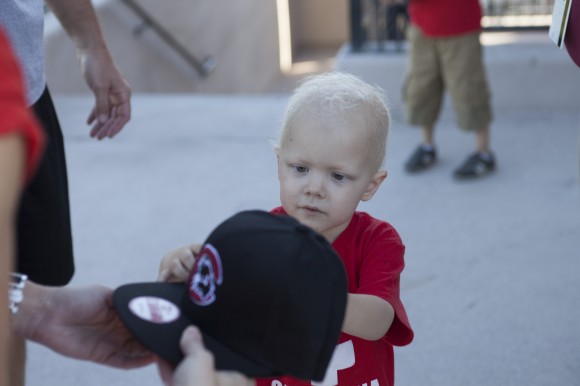
Three-year-old Ben Teach, son of Liz Teach (MAT) ’04, is presented with a baseball cap from Chapman Athletics during a recent tour of the football facilities. Ben is awaiting a bone marrow transplant, and the football team is hosting a campus bone marrow registry drive in hopes of helping find him a donor match. (Photo/ Da Zhang (’15))
Three-year-old Ben Teach was having a busy afternoon. He jogged up and down the halls of Chapman University’s Lastinger Athletics Complex with his older brother, Max, toured the football locker room and hit the field to run sprints with several members of the football team.
Seeing the busy preschooler rocket around Ernie C. Chapman Stadium, one would never guess that he was diagnosed with a rare form of leukemia in October, had undergone chemotherapy and is awaiting a bone marrow transplant. His mother, Liz Teach (MAT ’04), smiled as she watched her youngest son.
“He didn’t get the message that he has cancer,” Teach said.
But thanks to Paige Morrison ’08, the entire Chapman University
football team did. Morrison is a community engagement representative with the nonprofit organization Be the Match, operated by the National Marrow Donor Program (NMDP). Be the Match manages the largest and most diverse marrow registry in the world for people who need a bone marrow or stem cell transplant to cure blood cancers like leukemia and lymphoma. To recruit potential donors, Be the Match continuously holds community bone marrow registry drives.
“A lot of those blood cancers and blood diseases can be cured by a bone marrow transplant,” Morrison said. “But not every patient is finding their match. That’s why we’re always growing the registry.”
When Ben’s family became a client of Be the Match, Morrison naturally turned to her alma mater.
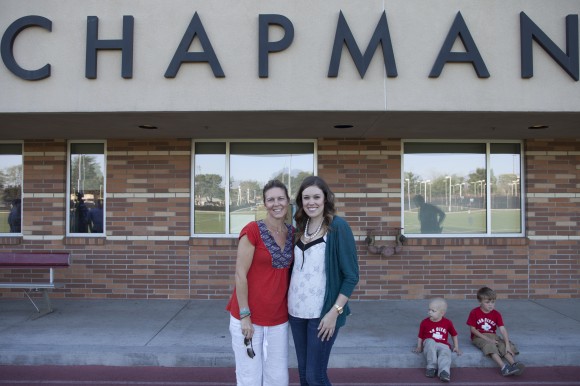
Liz Teach ’04 joins Paige Morrison ’08 on a tour of the football facilities arranged for Teach’s sons, Ben and Max. (Photo/ Da Zhang (’15))
“It just seemed like a perfect fit. With Liz graduating from Chapman herself and Ben being treated right around the corner at CHOC, I thought it would be a fun community event,” said Morrison, who graduated with a degree in communications. “And what better way to get the message out there on campus than through the football team?”
Now the Chapman football team and Chapman University Athletics are hosting a marrow registry drive Wednesday, March 12, from 10 a.m. to 2 p.m. in Attallah Piazza. Anyone age 18 to 44 is eligible to become a registered donor, which requires just a bit of paperwork and a cheek swab.
Running back Jeremiah McKibbins ’15 of Inglewood, Calif., who’s helping to organize the drive, said the cause resonated with the team because Coach Bob Owens always tells them, “You have not lived till you have made someone smile,” and they consider this an opportunity to do just that.
“It’s a special activity where everyone is a winner. All sides can benefit from doing things like this,” McKibbins said.
It’s hoped that this drive for Ben will produce a match, but each drive adds donors to the registry who could potentially save lives anywhere in the world. On average 12,000 patients come to Be the Match each year in hopes of finding a donor match, Morrison said. In 2013 Be the Match facilitated 6,300 transplants.
While patients are most likely to match someone who shares their ethnic background, family members aren’t always a match. And there is always a need for more donors with African American, American Indian, Alaskan Native, Asian, South Asian, Hawaiian and Pacific Islander, Hispanic or Latino and multiple-race backgrounds, according to Be the Match.
In the United States, about one out of every 540 registered donors goes on to to donate. Most donations can be done similarly to a blood donation, with only the stem cells being filtered out for use. In about 25 percent of cases, the donation requires an outpatient procedure to extract liquid marrow from the back of the pelvic bone.
“You don’t feel it when it’s happening, it’s an outpatient procedure and you’re back to your normal routine within five to seven days,” Morrison said. “From what I’ve heard from actual donors,it feels like you fell off a snowboard, so you’re a little stiff and sore but the more you walk around, the better you feel.”
And there’s always comfort in knowing what such a donation can mean for patients like Ben.
Be the Match also welcomes financial contributions to help support its ongoing research and patient support programs. For more information, visit Ben’s Be the Match campaign page.
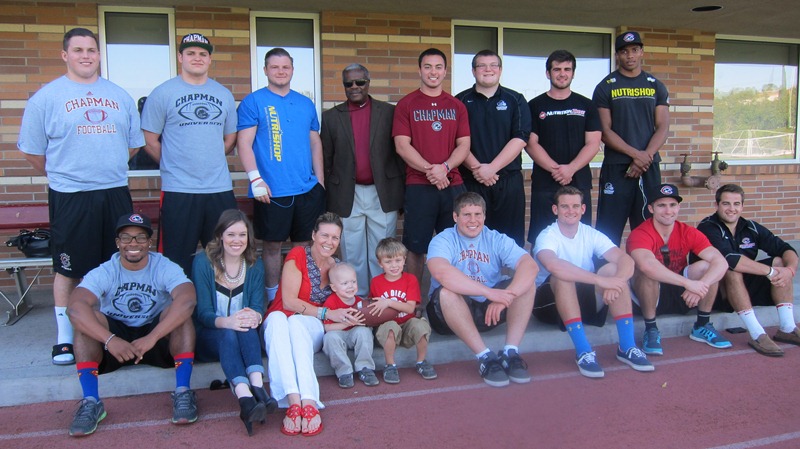
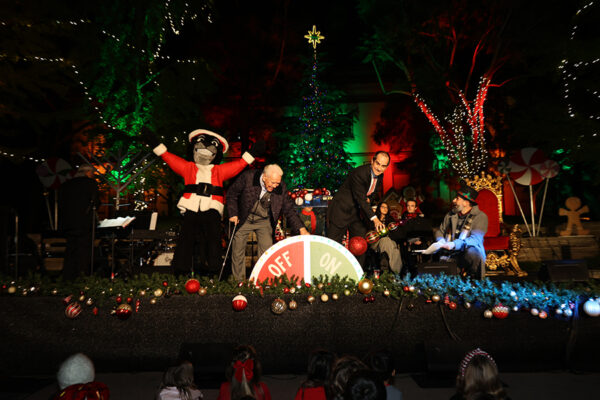
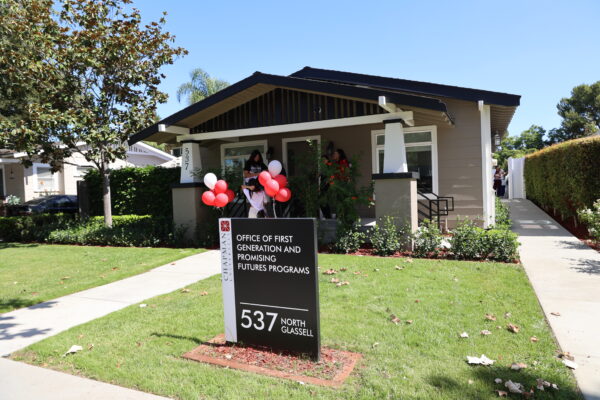


Add comment